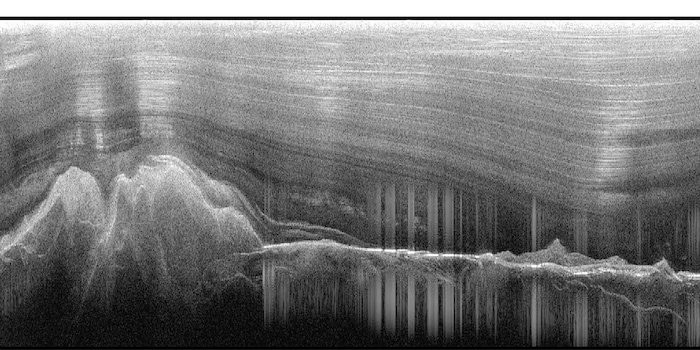
How the most mysterious mountain range on earth was formed
Hidden beneath the Antarctic ice lies the Gamburtsev Mountains, which are as large as the Alps. It is only slowly revealing its secrets.
In the 1950s, Soviet scientists used seismic data to discover a huge mountain range under the ice of East Antarctica that no one had ever heard of before. Comparable in size and height to the European Alps, the Gamburtsev Mountains lie hidden kilometres deep beneath the ice sheet, which protects it like a time capsule, but also makes it difficult to explore. Nathan Daczko and Jacqueline Halpin from the University of Tasmania in Hobart have managed to gather some new details about the formation of the mountain range, which was formed more than 500 million years ago.
As the Gamburtsev Mountains cannot be observed directly and drilling through the ice down to the rock is difficult and selective, Daczko and Halpin resorted to dating zircon minerals. These originate from the mountains, but were removed by erosion and reached the Prince Charles Mountains, which are hundreds of kilometres away but at least partially protrude from the glaciers, via meltwater streams under the ice. An isotope analysis revealed that these minerals were washed out of the rock more than 250 million years ago. At the same time, they harbour tiny traces of uranium in their crystal structures. The team used this decay rate to determine when the zircon was formed.
The two scientists used these measurements to create a timeline of the Gamburtsev Mountains: it began to rise 650 million years ago when two continental plates collided with each other, which later formed parts of the supercontinent Gondwana. Just as plate tectonics caused India to push into Eurasia and fold up the Himalayas in the process, the earth's crust piled up higher and higher at the point of contact. 580 million years ago, the Gamburtsev Mountains actually reached heights similar to the Himalayas today, but then the descent began again: the earth's crust at the root of the mountain range became thicker and thicker, but also hotter and more unstable.
Under the pressure of the rock masses, the softer, viscous material at the base was pushed outwards due to the heating, causing the mountains to slowly sink over time: a process known as gravitational spreading. However, a thick crustal root remained underneath the sinking mountains, reaching deep into the Earth's mantle. The «remains» of the Gamburtsev Mountains then largely retained their shape because the developing Antarctic ice wrapped around them like a carapace, preventing erosion from wearing away and remodelling them like other mountains on Earth.
Daczko and Halpin hope to gain further insights into the ghost mountains under the ice from boulders found near the Denman Glacier on the East Antarctic coast. They could also originate from the Gamburtsev and reveal even more about its formation history, the two scientists hope, according to «The Conversation».
Spectrum of science
We are partners of Spektrum der Wissenschaft and want to make well-founded information more accessible to you. Follow Spektrum der Wissenschaft if you like the articles
Originalartikel auf Spektrum.de
Experts from science and research report on the latest findings in their fields – competent, authentic and comprehensible.
From the latest iPhone to the return of 80s fashion. The editorial team will help you make sense of it all.
Show all